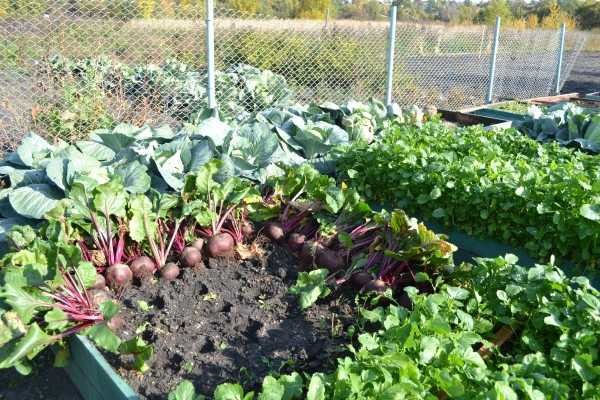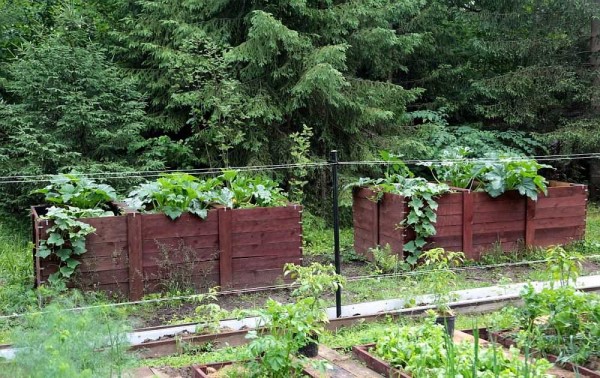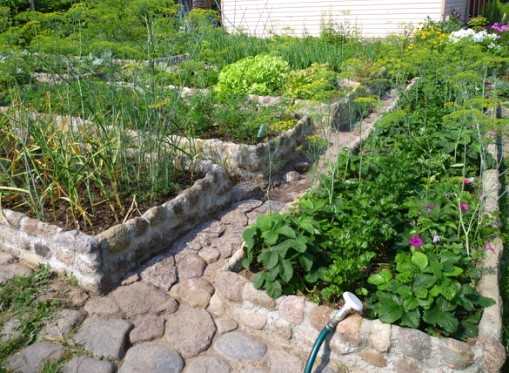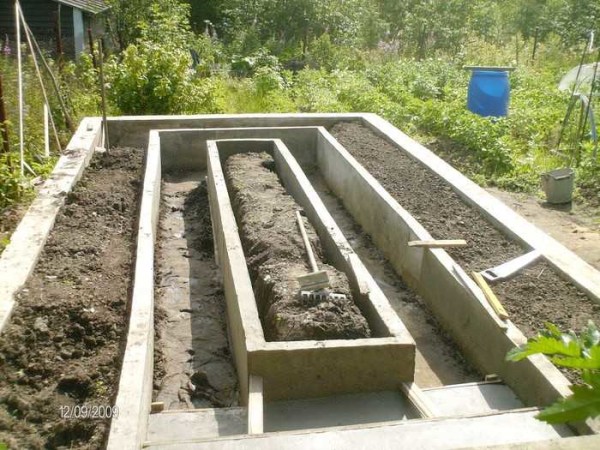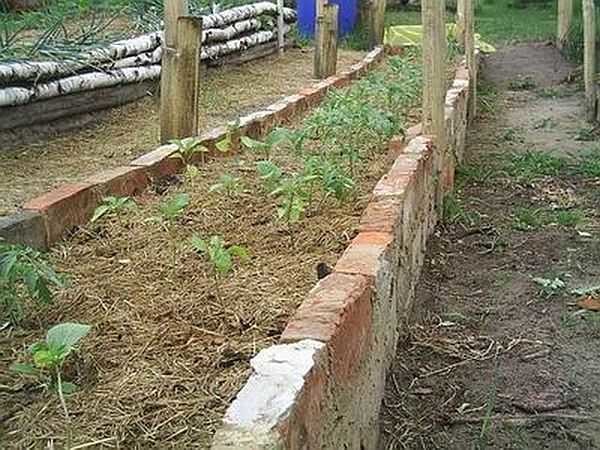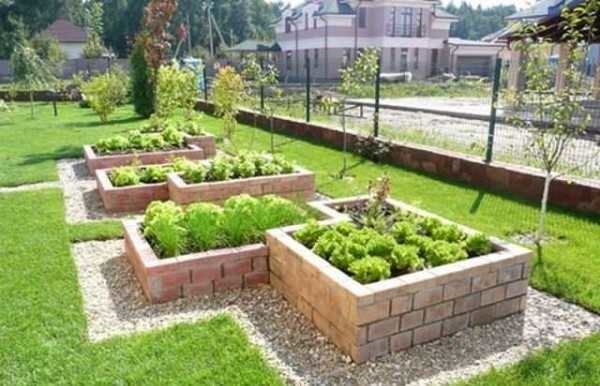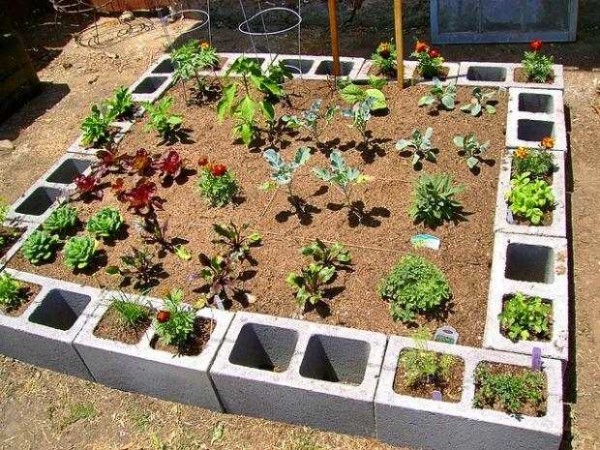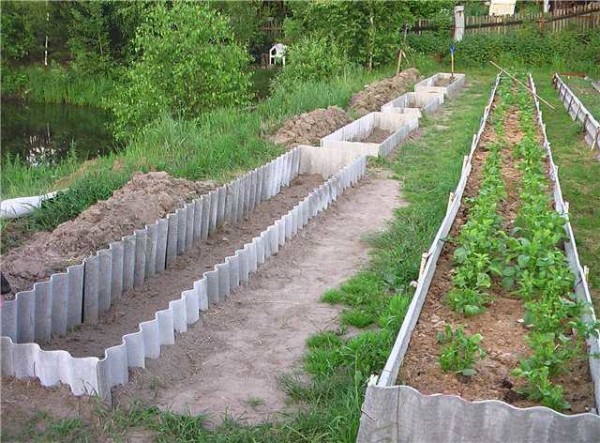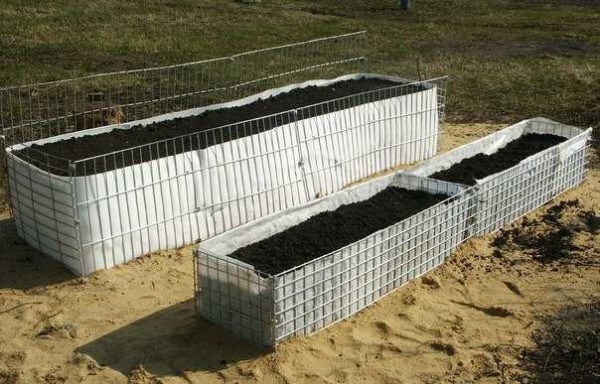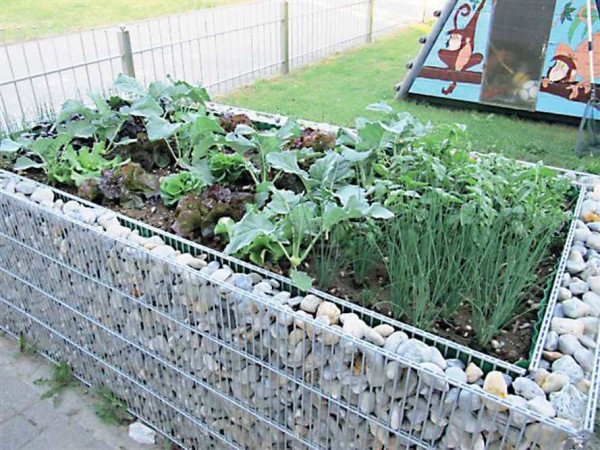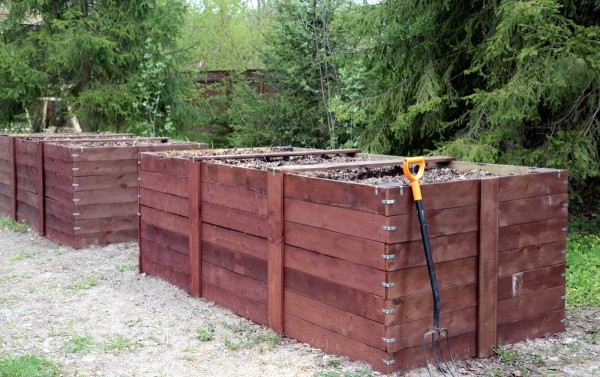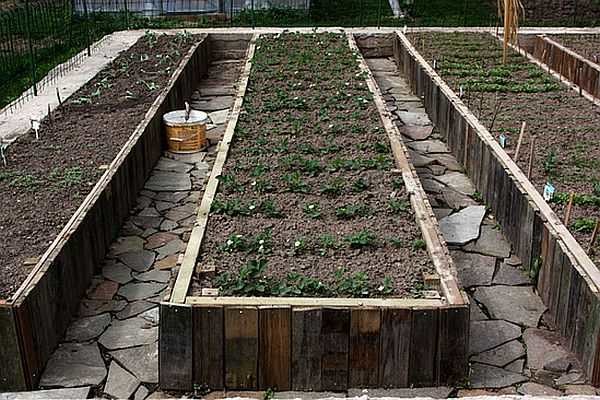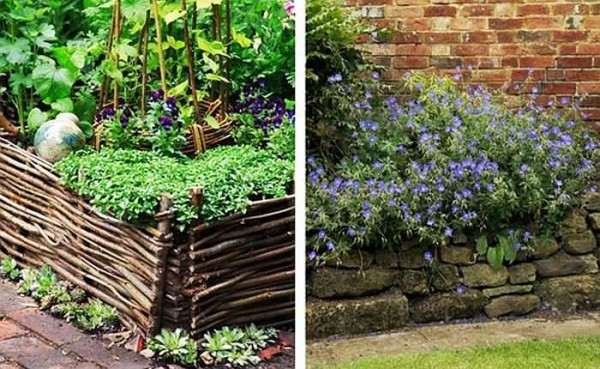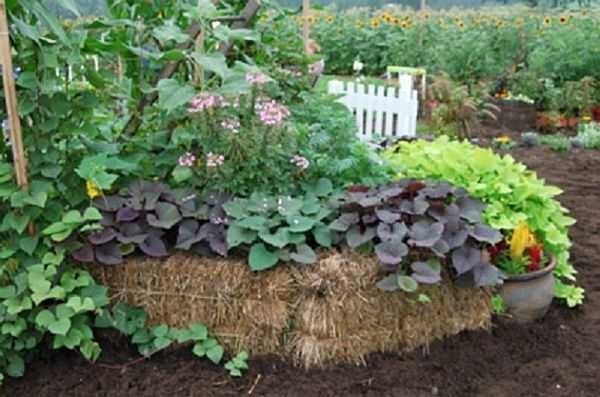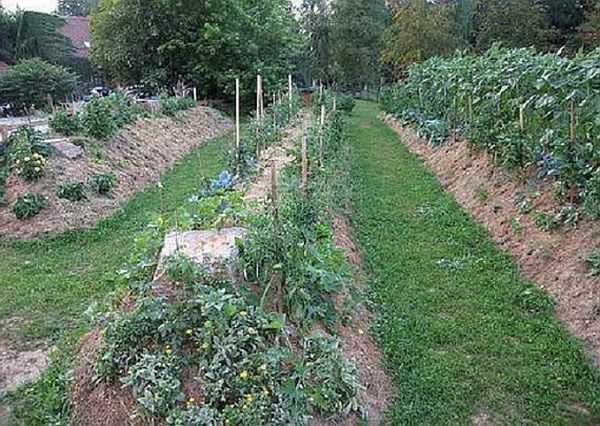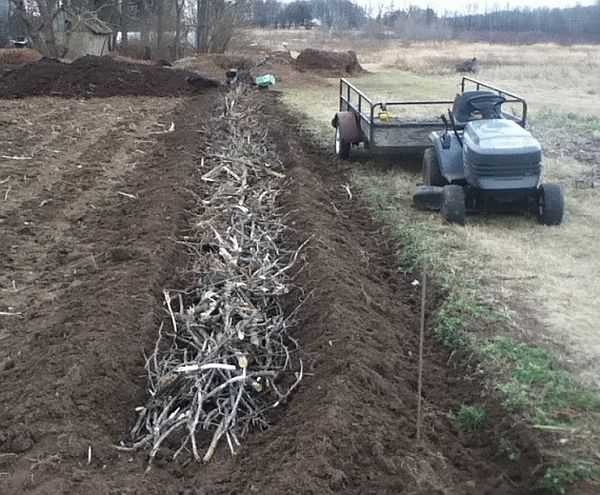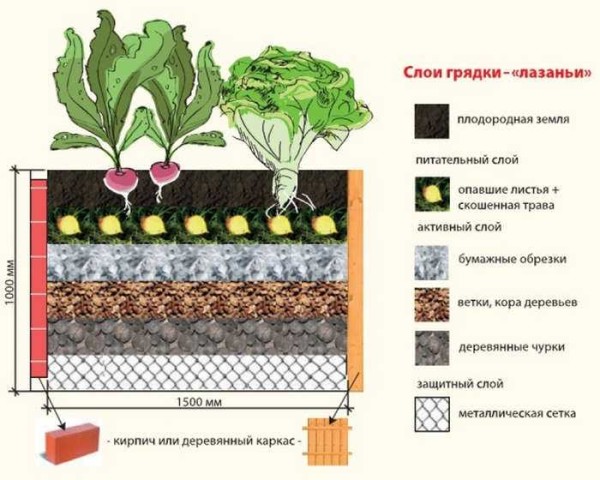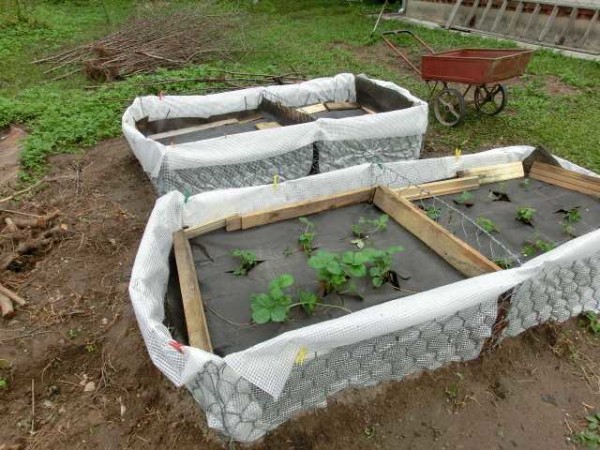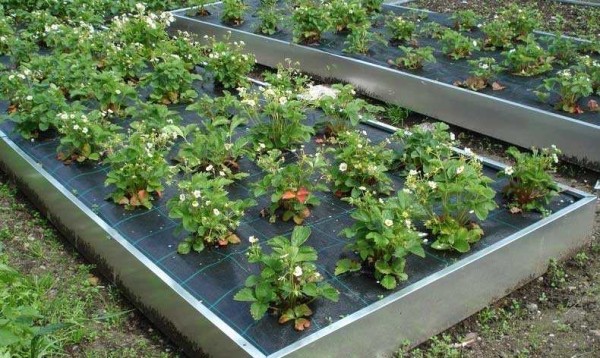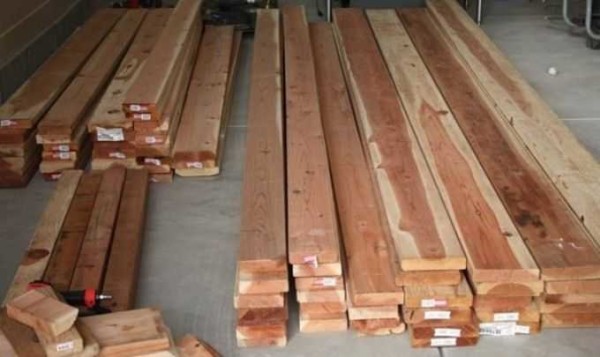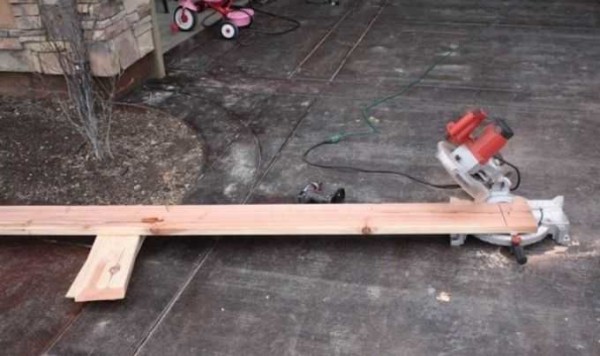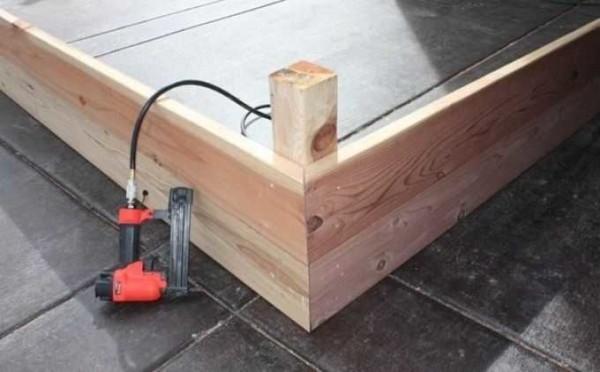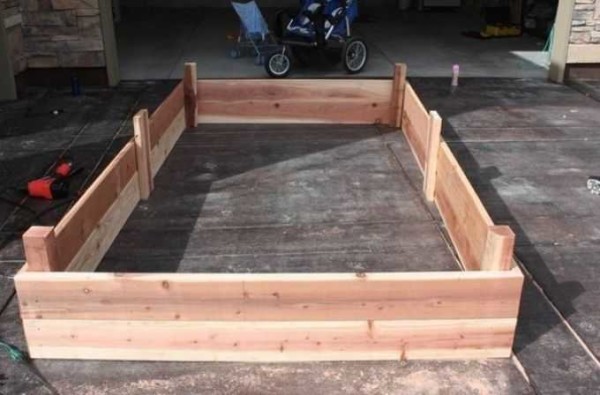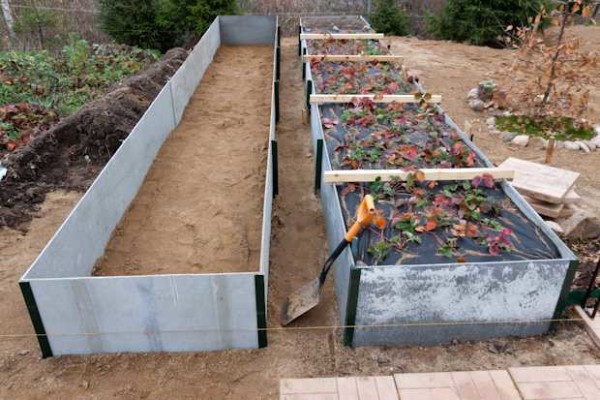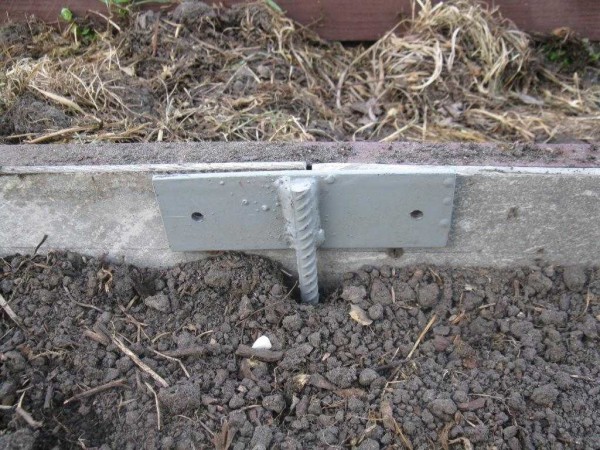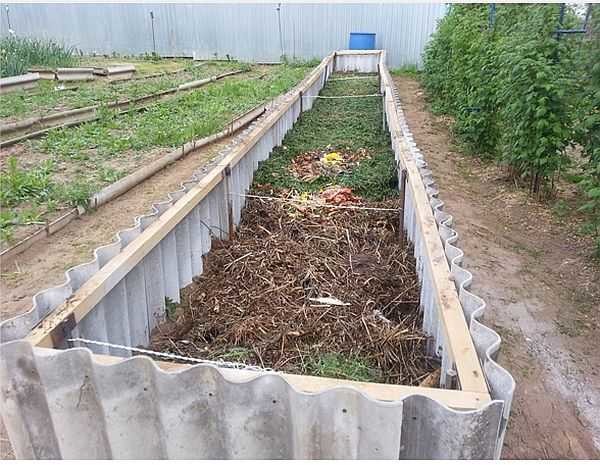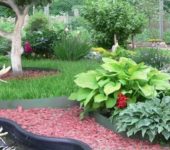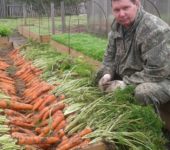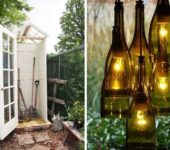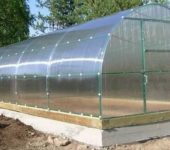High beds: how and what to make
Many summer residents suffer from the fact that the groundwater is too high on the site. Excessive soil moisture is not suitable for all plants, many develop poorly or even die. You can solve the problem by making high beds. With such an organization of plantings, it is possible to control the degree of humidity. And a pleasant bonus to such a decision will be an earlier ripening period and a much larger yield.
The content of the article
Advantages and disadvantages
In addition to solving problems with waterlogging, high beds in the garden allow you to sow or plant plants 2-3 weeks earlier: elevated above the ground, they warm up more actively due to the fact that the sun heats the walls. This is also facilitated by the decomposition processes occurring in plant waste, which make up a significant part of the backfill. Therefore, such beds are also called warm. If you put arcs on such a bed and cover with spunbonod or other similar material, then the crop can be harvested even earlier.
The device is more problematic in regions with hot climates. The task in this case is not better to heat the earth, but to keep it from overheating. But this can also be solved: to use materials with poor thermal conductivity, for example, wood, for fencing high beds. For the best effect, you can make double walls, between which you can fill in, for example, sawdust, lay foam, or you can leave an air gap - the best thermal insulation. The outer wall in hot climates is best painted with white paint or whitewashed. It is known that light-colored surfaces heat up less. In this case, it will be possible to keep the root system from overheating: in the south, the earth sometimes heats up very much and the higher the plant is, the cooler it will be. And over the beds, you can stretch the same covering material. It not only retains heat, but also protects against overheating.
Tall beds can also be a good way out in poor land. It is more convenient to lay out the imported soil in the beds, and not distribute it over the entire site. The compost layer, which is under the soil layer, contributes to the maintenance of fertility.
The problem of dry regions is also being addressed. In this case, the fence for a high bed from the inside is coated with bitumen mastic or covered with a film, rolled waterproofing material is laid on the bottom (on the mesh) (roofing material will quickly rot, so something from a modern type of waterproofing is better). It will not be possible to achieve complete waterproofing, but to keep moisture inside in sufficient quantities - yes.
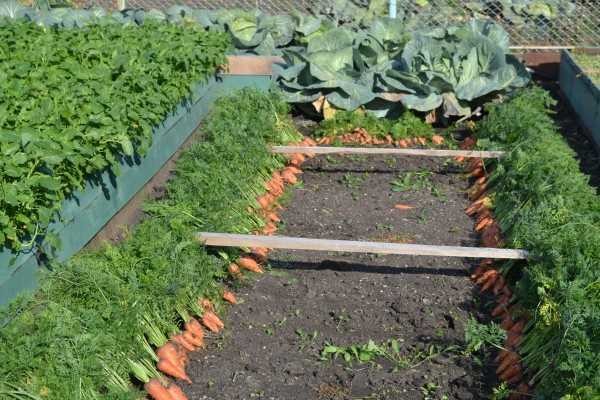
Carrots - one to one. The best in a high bed, although the same variety was planted on a regular one
As you can see, with a balanced approach, you can solve almost any problem. There are few shortcomings in high beds, but they could not do without them:
- In most cases, you have to make a fence, and this is a cost.
- Labor intensity of the process. Again it takes time to make fences, and there is a lot of land and plant debris moving around, which is hard work.
- Bears and other similar animals feel great in decaying leaves, branches, bark. We have to fight them.
- Fertility has to be maintained by updating or completely replacing the "filling".
That's all the disadvantages. If you decide to equip high beds, be prepared for a considerable amount of work. But the harvest will be many times greater. For a sample, you can make one or two beds.And then decide whether you need them or not.
Dimensions
There are no strict recommendations on this score, and there cannot be: very different conditions in the country, and people too. There are sizes that many consider to be optimal.
So, the dimensions of the high beds:
- Height - from 20 cm to 50-60 cm. Look here what a difficult task is. The higher the bed is raised, the easier it is to process it - bend less. But more land and all the rest of the "filling" will be required. One more point: if a small bed in height can be under the snow and will be covered from severe frosts, then the high one will freeze through: the sides are also open. For those ridges where annuals are sown, this does not play any role, but for perennial strawberries, say, this is a problem. Therefore, they choose the height based on these considerations. According to the experience of many summer residents, the optimal height for strawberries is 20 cm.Then one can hope that it will not freeze out.
- Width - from 60 cm to 1.2 m. Choose such a distance that it is convenient for you to handle the garden. A distance of 60-70 cm is chosen if the approach to the bed is only from one side. If you can get to it from both sides, you can make a meter or more. It is important that the middle is processed without much stress.
- It is long. Here everyone chooses based on the configuration of the site or their desires. There are no recommendations at all.
So that the bed is not too high, part of it can be buried: dig in 20-30 cm, and put the walls on top. The removed soil will go for backfill (there is often simply not enough soil), and the substrate from the lower coarse layers can be made thicker. And in order to minimize the cost of maintaining such a bed, you can make drip irrigation.
How can you fence high beds
Anything that can hold the soil can be used. The most durable curbs are made from brick, stone and concrete.
But a brick costs a lot, it takes a long time to deal with concrete. A concrete fence is made according to all the rules: first, the formwork, into which the reinforcement is laid, then it is poured with concrete and wait until it grabs. But the service life is impressive - tens of years.
Brick and stone fencing is also folded according to all the rules: for mortar with bandaging. To reduce the consumption of bricks, the walls are placed in half a brick. And so that the earth does not move it, the rows are reinforced with mesh.
But even in this version, it will be necessary to install support pillars every meter. If your soil is viscous, heavy, often waterlogged, such walls can be squeezed out. Therefore, put wooden or metal supports that will fix long walls or make small beds, as for decorative garden.
Fences made of expanded clay blocks have proven themselves well. Even the voids in them can be covered with soil and plants with a small root system can also be planted there: for example, some types of greens and salads.
They also make fences for high beds from galvanized metal and slate. Slate can be used used, you can buy a new one, wave or smooth - no difference. Cut the sheets into strips of the required width. You should not be afraid that it is harmful. In slate, asbestos is contained in a bound state, but it does not dissolve with water. It is harmful when it is sawed: dust rises and enters the body through the respiratory tract. To reduce harm, wear a respirator and also wet the incision sites.
They make plastic garden fences. Have you changed your siding? Use it. There are old plastic panels - they are in business. But plastic requires a rigid base.It is made from a thick wire mesh.
The meshes can form the basis for pebbles or pellets. Only in this case will you need a double frame, inside which stones or some other material are poured. This technique is called "gabion" and from it they make not only fences for beds and flower bedbut also fences. But so that water does not seep through the walls from the gabion beds, the box is lined with a dense film from the inside.
The most popular fence is wood. You can use boards, beams, logs. Wood is good for everyone, except that it rots.
And since all the conditions for activating this process are created in high beds, destruction occurs quite quickly. You can slow down the process somewhat by painting the boards or impregnating them with a bioprotective compound. But there is still no guarantee against destruction.
But the material can be used cheap, and sometimes, it is generally junk: leftovers after construction, slab, old logs, pallets, etc. If you wish, you can even make a fence from branches. Only the bark is desirable to remove: it is under it that there are many larvae and woodworms. Although ... they will also recycle wood residues that you put on the bottom of the backfill. But too many of them are also not needed, so, probably, it is still better to remove the bark.
From the same branches, only freshly cut, you can make a wicker fence. And it will also need to be covered with a film from the inside: to keep water and earth inside.
About, how to make wattle fence read here.
Even straw can be used. It is tied into small bundles, which are connected together with a wire. It simply cannot be cheaper, but it keeps water and temperature well. The only disadvantage of this option is that such a fence will serve a maximum of two seasons, but rather one. But it can then be used as one of the layers.
Bulk beds
There are high beds without a fence: the so-called bulk beds. The soil in them is poured in the form of hills.
To improve drainage, branches are laid inside such a ridge. To reduce the height of the beds (for example, for tomatoes), they deepen it a little, throwing the soil to the side. After the branches have been laid, it is filled up from above, often there is a need for additionally imported soil. If you can't choose the aisles deeply.
The disadvantage of this kind of garden: when watering and during rains, the top layer of the soil is washed off. Therefore, they began to make boxes - to avoid washing out the soil.
Layers of high beds
Framing is only a small part of the job. It is also necessary to fill the received box. It must be said right away that the thickness of the layers depends on the height of the bed that you have chosen, so if any values are given, it is only indicative. In addition to the size of the beds, the choice of plants affects the thickness of the layer, for example, the fertile one: for some, 5 cm is enough, but for others, much more is needed.
So, what to pour into a high bed - layers from bottom to top:
- A metal mesh with a fine mesh or a layer is laid on the bottom geotextile... You can stack cardboard. Mesh and geotextile - protection against rodents and moles. Cardboard plays a similar role, but is less effective.
- Large wood residues: thick branches, twigs, even chocks and blocks. This layer serves, firstly, for drainage, and secondly, moisture accumulates in the wood. The drier the climate in your area, the more wood you need. Moreover, the next wood layers too.
- Chopped small branches, bark.Other coarse plant debris will do: corn stalks, straw. Their task is also twofold. They store water and release heat and nutrients when decomposed. But when using corn trunks and straw, keep in mind that the bed will soon drop: these remnants quickly rot, but the yield will be high, and you can add fertile soil from above.
- Paper, thin cardboard. It is usually lined with a thin layer. Wrapping cardboard is more often used, because glossy paper is not suitable, just like newspapers: the lead base of the paint is not at all what you need to fertilize the plants. If you have old unnecessary burlap (natural), you can stack it.
- A layer of plant residues: foliage, grass, semi-decomposed sawdust. Be careful with sawdust: they strongly acidify the soil. So place them under plants that like acidic soil, or neutralize the acidity by sprinkling them with a good layer of ash.
- Fertile land.
In the last two layers, you can add a good dose of matured compost, as well as sprinkle it into the deeper layers. This will speed up the "readiness" of the tall bed for planting.
About, how to make a pond in the country with your own hands read thatt, and in this article describes how to turn it into a fountain.
When is the best time to do and what to plant
It is better to fill a high bed in the fall. During this period, there will be enough "material" and during the winter the processes inside will gain momentum. In this case, you can plant plants in the spring and hope for a high yield. It can be done in the spring, but there will hardly be any significant differences in yield: the processes have just begun and will not be able to have a noticeable effect on the fertility of the backfill. Although you can definitely feel the difference in the amount of water for irrigation: much less water is required.
Plant alternation
In the year of the device of a high bed, plants requiring high fertility can be planted on it: cucumbers, zucchini, zucchini, pumpkin, any type of cabbage, eggplant, tomatoes, bell peppers. For another year, you can plant greens - spicy-aromatic and leafy. Root crops feel good in the second year.
After harvesting the second harvest, it is necessary to restore fertility. If the contents of the garden have subsided, in the fall they fill up with good soil mixed with mature compost. If there is nowhere to fill up, remove part of the top layer (on a compost heap or in another box as part of the backfill) and replace it with fresh soil with fertilizers.
Tall strawberry bed
It differs only in that a covering material is spread over the finished "pie". Holes are made in it, into which plants are planted. This option leads to the fact that moisture evaporates in minimal quantities, and weeds do not grow in the aisle. The second option - mulching the earth also works well, but evaporation is more intense.
The peculiarity of strawberries is that its roots are located mainly on the surface. Therefore, the fertile layer may be small. But the same feature leads to the fact that during severe frosts, it can die. Although there is a decomposition process inside the high bed, heating the soil, if the bed is without snow and not covered for the winter, the root system may freeze.
High bed for cucumbers and tomatoes
In terms of its structure, it is no different. Unless only by the fact that pillars and crossbars or stretched wire are needed at the edges so that you can tie up tomato bushes or cucumber lashes.
You can read about the organization of automatic irrigation of a vegetable garden or plot here.
Diy high beds
Most often, questions arise not when laying layers in high beds, but when making a box. Since women are often closely involved in the garden, up to the manufacture of fences for the beds, they may not understand many points.To clarify the most difficult, we present photo reports of the manufacture of a box from boards and slate - the most common fences.
From planks
Several options for how you can make tall beds of boards were in the photo above. The main snag is usually the joint in the corners. The easiest way is to make them overlap: just stick one to the other at 90 ° and knock them through with nails. But there are aesthetes who strive to do everything right. And that's right - saw down two boards at an angle of 45 ° and so connect them. It is this option that will be demonstrated in the photo.
To make it convenient to fix the fence on the ground, with a step of 1.2-1.5 m, vertical bars or pieces of board are nailed, the length of which is about 20 cm longer than the selected bed height.
The lower end of the bar or board needs to be sharpened - this will make it easier to drive the fence into the ground. Then we take a miter box or circular saw and cut the edges at a 45 ° angle. Putting the two planks together creates a perfect 90 ° angle.
For a strong connection on the inside of the corner, we install a bar to which we nail the boards.
Fencing for high beds made of wood does not take long, but it is even easier to connect the boards end-to-end, and for strength, nail metal corners (pictured below).
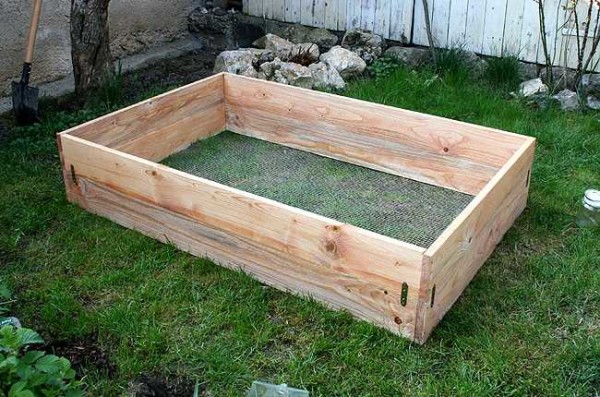
The easiest option
From logs
It is not more difficult to make a similar box from hewn logs. For example, this option: two long sides are made of logs, and the short ones are made of pieces of boards.
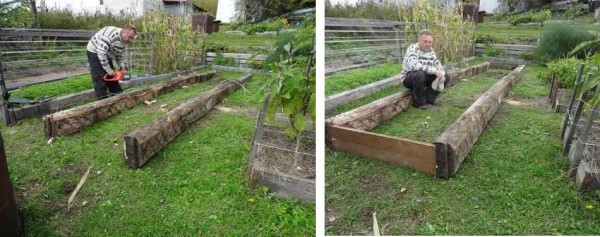
The advantage of logs is that they are heavy, and due to their weight they will hold the ground well
Whitewash the finished fence: both protection from pests and the view are more attractive.
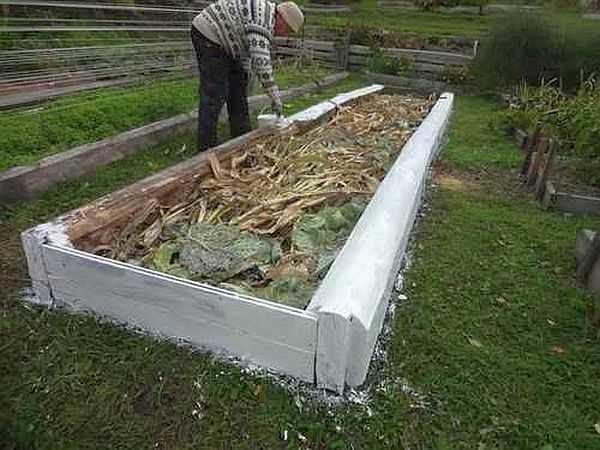
Getting started with the arrangement
Slate
When making beds from flat or wave slate, questions also arise about how to fix it. The easiest way is to dig in. But this is uneconomical: you will have to make the strips wider by at least 10 cm and still there is no guarantee that the slate will not "float" in the spring. In the muddy earth, it will simply be squeezed out by the mass. You can fix it, but this is extra time and effort.
Therefore, most often corners or pipes are driven in from one or both sides of the sheet, which clamp the slate and do not allow it to deviate greatly. In the photo, the corners are hammered in only from the outside: from the inside, a mass of layers of a high bed will press, so that the fence will not fall inside.
The joints of the two sheets are secured with a special welded plate. For reliability, they can be bolted to a wooden block attached to that side.
Another option is to make a wireframe. Attach a bar or corner to similar racks with welded plates - for whom which is cheaper. And to this frame, fasten slate cut into strips (it holds well with nails, but it is easier with self-tapping screws).
By the same principle - with guides - they make beds from plastic panels and other similar materials. As you understand, especially virtuoso skills are not needed here. The main thing is to keep well.

